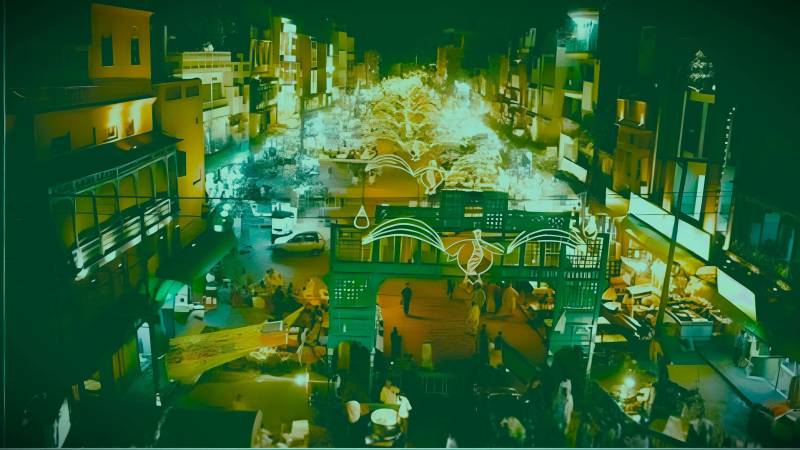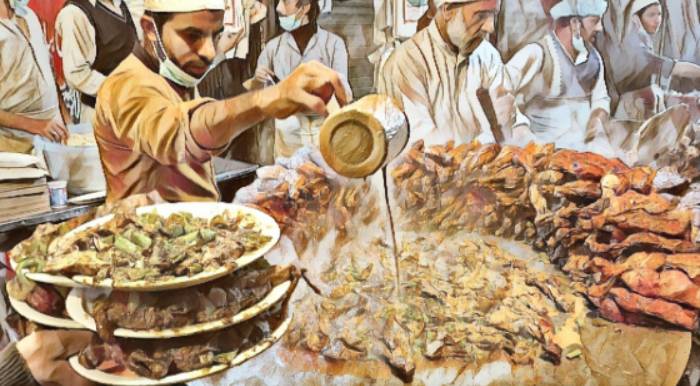
Some historical places, where you start spending a considerable amount of time, unknowingly become an inseparable part of yourself. It is only when you stop visiting them, even for a short period of time, that you realise how terribly you miss them and all that they have to offer. One such place, which I started missing desperately a few days ago and where I would spend nearly four to five evenings every week, is the old Anarkali Bazaar.
This fabled bazaar is named after the sobriquet of Nadira Begum, the favorite nautch girl in the harem of Timurid-Mughal Emperor Akbar. As legend has it, Akbar’s son Prince Salim was smitten by Anarkali's bewitching beauty and had fallen head over heels in love with her. Upon learning of this affair, the emperor, after using many ploys to tarnish Anarkali's reputation in Salim's eyes, eventually issued a decree to bury the beautiful woman alive. Woebegone Salim, having no other recourse to avenge her apparent murder, rebelled against his father. However, before long, he reconciled with his father and, as a result, became the fourth Mughal emperor.

Anarkali is my go-to place because it offers a variety of things that suit my disposition perfectly. Being one of the largest bazaars in South Asia, it is divided into two parts: Old Anarkali and New Anarkali. Old Anarkali is essentially a hub for some of the best - if not the very best - affordable Pakistani cuisine. Both sides of Old Anarkali are lined with restaurants, as well as a few garment and shoe shops
Yasir Broast and Waris Tikka, although popular with a large clientele, are not the kind of eateries where you can find mouthwatering dishes. However, opposite to Waris Tikka is a budget-friendly eatery, New Islamabad Restaurant (NIR), where you can savour delicious barbecued chicken pieces, scrumptious Tawwa chicken with extra gravy, and even chicken Karrahi. Of course, as nothing is free in this world: these delightful pleasures also come at a modest additional cost, which involves tipping the waiter upfront.
Not far from NIR is a modern café, Lahore Tea House—commonly known among students as LTH—offering a stylish ambience and a variety of dishes. It successfully allows you to escape the old setting of Anarkali and makes you feel as if you are sitting in a high-end café located in Gulberg or another posh area of Lahore.
Furthermore, just a few steps away from LTH is Riaz Halwa Puri Shop, a seven-decade-old establishment. Everyone there, from the owners to the ustads (skilled workers) and workers, is friendly and welcomes you with warm smiles. They serve hot, steamy puris with delicious Halwa, Channy and pickle. However, it is advisable not to consume more than one and a half puris at once, as they are quite oily and, when not eaten in moderation, may lead to a headache.
Another essential component of a complete breakfast is a piping hot cup of tea, which you can get from Gul Khan Tea Stall. As the very name suggests, the establishment is run by Pashtuns and offers the best Karrak tea. It is usually crowded with tea lovers.
If you've ever had the chance to visit this place before, your guess about the next point is perhaps as good as mine. A little before the old Tollinton Market, which is now a part of the National College of Arts, tables and chairs are arranged along either side of the pathway where people of all ages are often seen savouring pani puris, often making funny faces after every bite. Undoubtedly, the kind of sour, tangy pani puri water you can find here is hardly available anywhere else in Lahore—and that too at an incredibly low price. Regarding its naturalness, it can be easily ascertained from the residue left in the pyali, the container from which one drinks.
The old Anarkali bazaar ends at what is known as Hafiz Juice Corner. It is an open-air setup with chairs and tables laid out on a patch of sparsely grassy land. One of the primary reasons for its fame is that upon buying a glass of shake, a glass half the size of the real one is given gratis. It is usually populated with young students belonging to different universities and institutions. Some are smoking away their worries, while others are indulging in lively banter.
As this place is mostly crowded with couples, it is natural to find ghajera sellers hovering around. The urge to see those fresh, beautiful ghajeras on equally beautiful wrists compels many to fish out some cash to purchase them. Occasionally, there is a flute seller playing evergreen songs on his flute with the aim of attracting customers. Once, my friend and I found what seemed to be a professional flute player sitting a little distance away from Hafiz Juice Corner. Using his flute, he was creating a tune for the song "Dekha Aik Khwaab To Ye Silsila Huwe" from the Indian movie Silsila.
The mellifluous tune rending the air had such a powerful influence on us that we found ourselves requesting the flute player to repeat the melody. Having found appreciative ears, he readily and cheerfully acceded to our request.
This side of Anarkali is remarkably evocative. Every time one visits this place, it leaves one with a stronger desire to return again and again. It is simply a place where many people in the prime of their lives weave everlasting memories.

